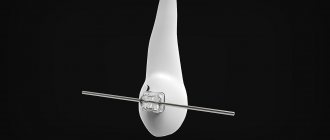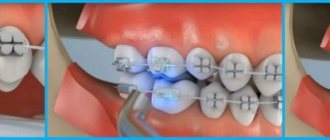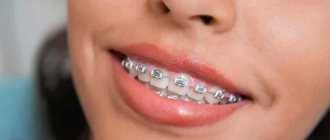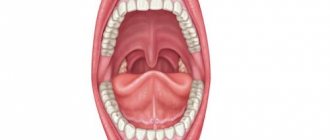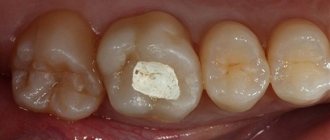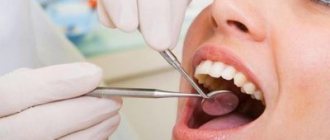Many patients in dental clinics do not seek help from an orthodontist because they believe that teeth correction with braces – it’s difficult, painful, expensive, or simply not for adults. Such a variety of myths only fuels the fear of braces and gives rise to a number of problems not only of a dental nature, but also of a psychological nature. Incorrect bite and dental defects, although harmless at first glance, can sometimes lead to serious problems with diction, difficulty breathing, problems with chewing food, and even distortion of the jaw skeleton.
Dental pathologies require urgent medical intervention, but how can you not miss this moment if you are clearly convinced that braces are not for you? The Center for Family Dentistry "Medexpert" invites you to consider the main myths about braces and find out where the truth is and where the lies are?
Consequences of installing braces
The benefits of braces are undeniable. These orthodontic products are actively used to correct various dental defects. However, if used incorrectly, braces can cause harm. Before installing them, the doctor will definitely tell the patient about possible negative consequences (which are often temporary). These include:
- Unpleasant feeling in the mouth . This is a normal reaction to the appearance of a foreign object in the oral cavity. As a rule, it takes 2-4 weeks to get used to braces. The first days are the most unpleasant, but very soon you will feel relief and then you will get used to it.
- Toothache . The main task of braces is to move and/or rotate the tooth into an anatomically correct position. Accordingly, as the tooth dislocates, the soft tissues are slightly injured. Pain occurs. In most cases, it is mild and aching in nature. In rare cases, the patient has to take painkillers.
- Increased salivation . This symptom will also have to be endured, since it is temporary. The appearance of a foreign body in the oral cavity is a signal for increased salivation. After a few days, saliva production returns to normal.
- Impaired diction . Those who are forced to work for the public suffer the most. On the other hand, such people especially need to take care of the beauty of their teeth. So we have to make such “sacrifices”. Note that this problem is also temporary. You adapt to new conditions very quickly.
- Problems with gums . Some patients may initially experience minor inflammation on their gums caused by braces. This is easy to deal with. It is enough to rinse your mouth with special solutions and use anti-inflammatory gels. But if the inflammation is caused by insufficient hygiene when wearing braces, then the treatment will be more complex and lengthy. Sometimes in such cases the doctor removes the braces ahead of schedule.
- Psychological consequences of braces . Many people develop complexes. They feel embarrassed to smile. They cover their smile with their hand or simply try not to open their mouth. From the outside it looks strange and not aesthetically pleasing. Today, you won’t surprise anyone with braces, so you shouldn’t be ashamed of them.
- Caries after braces . Be carefull! The most important and difficult task after installing braces is to keep your teeth and mouth clean. This should be done after every meal. If you neglect this rule, then caries appears very quickly.
- Damage to teeth . This is a rare complication that occurs due to improper stress on the teeth. As a rule, such problems can arise when the crown part of the teeth is shortened.
Also, other side effects (usually temporary) are possible from braces, depending on individual characteristics. The doctor will tell the patient about this.
How to brush your teeth with braces?
This is where a traditional toothbrush and toothpaste don't serve their purpose. Therefore, you will need to buy a special orthodontic brush, brushes and floss from the pharmacy. You can also use an oral irrigator if you wish.
This way you can effectively clean your teeth and the area around the locks. Teeth should be thoroughly brushed after each meal, because food debris is deposited on braces, which contributes to the development of caries and does not look aesthetically pleasing. We have repeatedly encountered patients whose teeth are more well-groomed than those of a person without braces.
Consequences after removing braces
Consequences of braces are possible even after they are removed. Possible problems include:
- Stains on enamel . This effect is possible due to poor hygiene. Teeth whitening and remineralization will help correct the situation.
- Changing the shape of the face . This is a very rare occurrence. And if the patient experiences drooping of the cheeks or changes in the nasolabial folds, then the defects are quickly restored with the help of special gymnastics.
- Demineralization of enamel . Another potential disadvantage of braces is the weakening of the enamel. This is due to the fact that under the structure the hard tissues of the tooth did not receive enough of the necessary microelements. To minimize the risk of such a complication, courses of treatment to strengthen the enamel (remineralization) are prescribed after braces.
- The teeth returned to their previous position . To prevent teeth from moving apart after braces, the patient needs to wear retainers for some time. These are special orthodontic splints that are placed on the teeth to secure the result.
What to do if the bracket comes off?
In itself, this happens quite rarely, only in cases of severe crowding of teeth, since the arch puts a lot of pressure on the dentition and the lock falls off. Another option is if the patient is a nut or other solid food lover.
If you find a broken bracket, contact your orthodontist immediately. Otherwise, the teeth will begin to gradually move to their original position. Also remove elastic bands if you wear them.
The doctor sees patients with unstuck braces out of turn. It takes about 5 minutes to glue a new lock.
It also happens that the archwire flies out of the bracket grooves. You can try to get it back yourself. However, this should be done extremely carefully, without damaging the adjacent locks.
Causes of problems
Negative consequences of braces most often occur when medical recommendations are not followed, namely:
- poor oral hygiene;
- consumption of foods that are undesirable during treatment with braces;
- non-compliance with other medical recommendations (they are individual for each patient).
Problems when wearing braces can also arise due to weakened immunity and some individual characteristics of the body. It is important to consult a doctor in a timely manner to eliminate current disorders. Before installing the structure, the doctor weighs all the pros and cons of such treatment, taking into account the patient’s characteristics.
Can you continue to live with crooked teeth?
Crooked teeth are more vulnerable to tooth decay and periodontal disease. If teeth grow incorrectly, their surfaces become excessively worn down when eating, which worsens the malocclusion. Therefore, sometimes it leads to serious diseases of the temporomandibular joints.
In addition, if you suffer from frequent headaches, chondrosis, or have tinnitus, it is better to check your bite.
Myths about the negative consequences of braces
We talk about the most common misconceptions regarding complications when wearing braces.
Braces lead to tooth decay
Braces do increase the risk of caries, but only if hygiene rules are neglected. To prevent caries from forming under braces, the products are fixed using orthodontic glue, which also has protective properties against the enamel.
After installing braces, the doctor will tell the patient how to brush their teeth properly. To do this, you will need dental floss, special brushes, and an irrigator. This cleaning will remove any food particles that may be stuck between the elements of the orthodontic structure.
Braces change the color of the enamel
After braces are removed, the areas of the teeth where the glue was applied may differ in color. But this is a temporary phenomenon. The patient undergoes professional cleaning and resurfacing. The natural color of teeth is restored and evened out within 2-3 weeks.
Braces cause crooked teeth
Everything is exactly the opposite. Braces straighten the teeth, particularly in cases of abnormal bite. And this is the main purpose and benefit of these structures. Problems arise when the patient refuses retainers. These are temporary orthodontic splints that are placed to prevent teeth from moving apart again.
Interdental gaps appear after braces
A gap between teeth after braces may appear for a short time until retainers are installed. After installing the splints, the teeth are in the correct position and the gap disappears.
Braces damage your gums
Gum problems after braces occur in approximately 4% of patients. Most often, the reason for this is insufficient hygiene or uneven chewing load (which was incorrectly calculated when installing the structure).
Braces cause headaches
Sometimes I get headaches after getting braces. This is a relatively rare side effect that is temporary. This problem can be solved after getting used to the design.
Can adults get braces to correct their bite?
Anyone can correct a malocclusion, regardless of age. But in an adult, this process takes longer than in children, because skeletal growth has already stopped and hard bones are more difficult to form.
In addition, some oral health conditions may delay the installation of braces. For example, caries, periodontal disease, endocrine diseases.
Sometimes the effect of treatment is influenced by the presence of crowns and bridges. The treatment period starts from 1.5 years.
Features of proper care
To prevent teeth from deteriorating after braces, it is important to follow basic oral care rules. These are 3 key recommendations:
- Proper hygiene . If you have braces, then from now on you won’t be able to get by with just a toothbrush. In addition, special brushes, small brushes, dental floss and mouthwash are also used. It is also advisable to use an irrigator to wash the oral cavity. Such hygiene is necessary to prevent caries, so that teeth do not deteriorate.
- Power control . Braces are a fairly fragile structure that can be damaged by hard foods, such as nuts, crackers, hard cheese and others. Avoid such foods, as well as sticky foods. If a breakdown or deformation of structural elements suddenly occurs, you should consult a doctor as soon as possible. It is contraindicated to remove braces on your own.
- Examinations with a doctor . In addition to the emergency cases described above, you also need to regularly go to the doctor for preventive examinations. Most often this is once a month, but an individual schedule is drawn up for each patient.
Do braces make it difficult to eat?
Once installed, you will need to learn how to eat in them. This period takes on average 3-7 days.
At this time, give preference to soft and liquid foods. Cut fruits and vegetables into small pieces. Avoid fibrous and sticky foods.
Over time, you will be able to eat almost everything except Coca-Cola (can dissolve glue), hard foods (nuts, crackers, chocolate) and sticky sweets (chocolate, cookies or caramel bars). You should also not chew gum.
Restoring enamel after braces
The aesthetic consequences of braces can be successfully eliminated using the following procedures:
- professional cleaning;
- teeth whitening;
- installation of retainers with a special composition that strengthens the enamel;
- polishing and processing of enamel with special solutions.
Which braces are better for an adult and which for a child?
In “Implantmaster”, to clarify whether the system is suitable for age, Rg diagnostics are performed (panoramic image (OPTG) and teleroentgenogram (TRG)).
The following points will help determine which braces are best for a certain age.
- Convenience during the entire course of treatment, duration of adaptation, ease of cleaning. The faster the adaptation period passes, and the easier it is to clean the equipment, the easier and faster the therapy will be.
- Price. You can immediately ask the clinic to calculate the full cost of fixing the turnkey system. But you should understand that additional ones will appear. costs of hygiene products and concomitant therapy.
- Time costs and success of correction. Systems with metal ligatures most effectively and quickly achieve the final goal - straight teeth. When choosing more aesthetic systems, the treatment period increases to a year.
- External characteristics of braces. For some patients, it is important whether the system is noticeable when talking and smiling. Then the emphasis is on aesthetics, and not on the speed of achieving results.
An alternative to correcting malocclusion at Implantmaster is a replaceable system of invisible aligners. They are removed for eating and cleaning. 3Shape Trios scans the entire oral cavity (a modern version of taking impressions), and then the software displays a 3D model of all changes on the path to improving your smile. Such innovations are only for aligners.
Braces for adults
What braces are best for adults? The most effective and common design suitable for adult patients is a self-ligating metal system. Also, this course of orthodontic therapy is affordable for most.
But which braces will still be better? Plates made of ceramics or sapphire will look more aesthetically pleasing and solid, but you will have to reconsider your diet and exclude coloring products. A language system would be an ideal option, but it is not suitable for people who, due to the specifics of their work, talk a lot. Soft tissue injury may occur.
Braces for children and teenagers
The result and speed of correction of bite anomalies very much depends on the age category to which the patient belongs. The most suitable period for orthodontic therapy is the period of growth of the jaw bones and the formation of a permanent bite (from 12 to 14 years). If it is necessary to be treated with braces, it is important to figure out which plates are best for children, taking into account their growth characteristics . It is better to start orthodontic therapy at a young age, but plates are best used from 12 years of age. The units and jaw bone are affected, so it is worth waiting for its full formation and using gentle techniques.
The equipment is used in children for a shorter time than in adults. It can be different in type, material and method of fixation.
What braces are best for a teenager? Most often, the plates are fixed on the outside of the enamel of the units. Such systems are more convenient to install, adjust at the reception and carry out thorough hygienic cleaning. Lingual plates are much more expensive and have an impact on spoken speech. And for teenagers, the attractiveness of the equipment and the ability to pronounce words normally are very important. After all, various comments from peers about the structure in the oral cavity can influence the decision of a young patient to get a beautiful and healthy smile.
Which braces are better to choose: ceramic or metal? Modern orthodontics can provide equipment to suit every taste and budget. But it is also worth taking into account the clinical situation and recommendations of specialists.
Parents should help their child prepare psychologically for long-term treatment. Especially talk about all the points relating to external systems and the reactions of others. It is important to warn that the discomfort that arises in the first weeks will pass, and further treatment will be easier.
FAQ
How does the oval of the face change after braces?
The face after braces becomes more symmetrical and proportional. This is a consequence of correcting the bite. For example, if a patient’s teeth do not close together and the face appears elongated, then after correction with braces the cosmetic defect is eliminated. Most often, after such treatment, the cheekbones become more expressive and the cheeks become sunken.
Is it possible not to wear retainers after braces?
Can. However, the consequences of such a decision are difficult to predict. The teeth will again try to return to their previous position. And then, 1-2 years of correction with braces will be useless.
Do braces make your lips look bigger?
Visually, yes, because there is a bracket arch under the lip. However, after removing the structure, the effect of lip augmentation disappears.
Do teeth fall out from braces?
No, they don't fall out. And information about this is just rumors that have no basis.
How often should inspections be carried out?
Every 1-2 months, it all depends on the defect and the individual structure of the patient’s teeth. During the visit, the orthodontist checks the success of the treatment and sets a vector for the arch, which determines the movement of teeth in the right direction.
Missing follow-up visits may negate the effect of previous treatment. You are also required to visit a hygienist every six months.
Braces, whether external or internal, need to be worn for an average of 1.5 years. But determining more precise timing depends on the initial situation and age of the patient. Sometimes it takes 2 years to eliminate a defect.
Why put them
Orthodontic elements are installed for many anomalies. These include crowding, diastema, incorrect placement of crowns and other disorders.
Bite correction
Why do they make, put on and wear braces when the teeth are in the wrong position? In this case, the structure of the dentition is disturbed. One of the jaws may be underdeveloped or extend far forward. A person has pronounced facial asymmetry; he cannot fully close the upper and lower elements of the maxillofacial apparatus.
Treatment lasts at least a year. In addition, a recovery period is subsequently indicated to consolidate the results. Stages:
- Preparation (from 2 days to a week). The duration depends on the condition of the oral cavity.
- Installation of an orthodontic arch. The period can be anything from several months to 2-3 years. The question is decided by the doctor based on the degree of neglect of the pathology.
- Recovery. Sometimes this may require as much as was spent on the correction itself.
Correcting crowding
When there is not enough space in the mouth, the units overlap each other. Due to lack of space, crowns become curved and change their natural position. What does this lead to:
- the appearance of carious cavities due to difficult hygiene, plaque accumulation and stone growth;
- periodontitis and other dental diseases;
- the occurrence of bad breath, which cannot be eliminated using special rinses and pastes;
- traumatic effects on individual parts of the jaw, resulting in destruction of periodontal fibers;
- formation of abscesses, fistulas and other inflammatory formations;
- inflammation of the submandibular lymph nodes.
Diastema correction
Wide gaps between adjacent teeth are a common problem. The anomaly can be symmetrical or asymmetrical. In the first case, the incisors, canines and molars are displaced from the center at equal intervals. In the second, one crown moves away more than the others.
Consequences of the pathology:
- diction disorders;
- whistling when pronouncing vowels and loud exclamations;
- instability to external influences;
- the appearance of complexes due to the aesthetic unattractiveness of the defect.
When you can and cannot wear braces
The use of the system is indicated for malocclusion, crowding, and diastema. People of any age can be treated in this way. There are some restrictions for pregnant women, patients with implants, etc.
Who is contraindicated for installing arches:
- persons with acute immunological and neuropsychiatric diseases;
- patients with diseases associated with blood clotting;
- people with bruxism, serious gum pathologies;
- if you are allergic to metal or other materials used.
